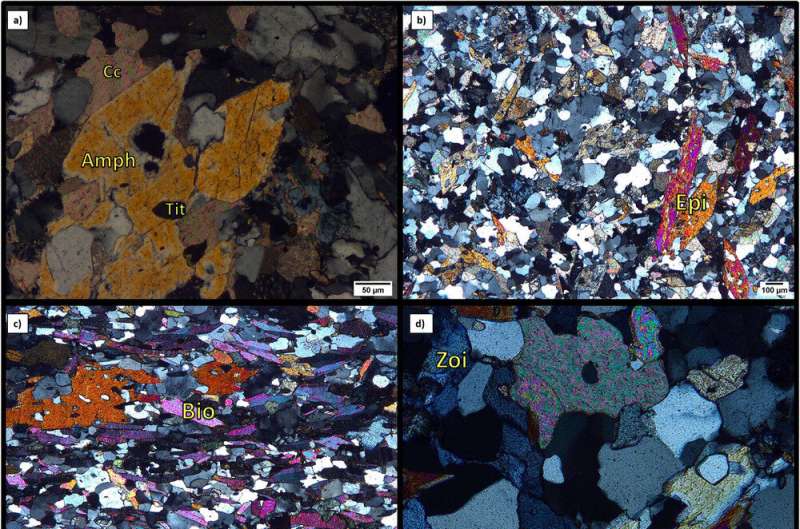This article has been reviewed according to Science X's editorial process and policies. Editors have highlighted the following attributes while ensuring the content's credibility:
fact-checked
peer-reviewed publication
trusted source
proofread
How did the forest develop at the Hailuogou glacier area?

Since the mid-19th century, increasing temperatures have resulted in the retreat of mountain glaciers on all continents. When glaciers retreat, they leave "glacial debris." This debris serves as new substrate for soil and ecosystem development.
A team of scientists studied a unique glacier, the Hailuogou glacier, to learn more about how a forest system quickly established itself in this region. This glacier is located in Sichuan, China, at an elevation of 2,900 to 3,000 meters above sea level. Strikingly, the Hailuogou glacial area has a mature forest that developed surprisingly quickly in less than 100 years. This is despite the local glacial debris being dominated by nutrient-poor granite with a small contribution of carbonate minerals.
In glacier retreat areas, "pioneer plants" start colonizing young surfaces soon after glacier melt. In the Hailuogou area such plants include sea buckthorn, willow, or poplar. Growing colonies frequently last decades, if not sometimes centuries, to develop a full cover.
The team was able to study a glacier retreat area that had developed in approximately the last 130 years. The glacier retreated by about 2 kilometers, or an average of 15 meters annually during this time. The initial vegetation development from bare soil was scattered mosses, lichens, grasses, and bushes. The area then was covered fully by bushes and deciduous trees. This correlated with a fast weathering of the calcium-carbonates in the parent material and thus a fast initial delivery of calcium.
The presence of carbonates kept the soil pH in a favorable near-neutral range. This makes the essential nutrients more bioavailable to plant life. Neutral pH favors the release of nutrients from organic matter such as nitrogen, phosphorus, and sulfur by bacteria and fungi as well.
According to the study, it suggests that it is the calcium-carbonates in the parent material that contributed to the fast establishment of a closed forest cover in only a few decades. There were other slower chemical weathering processes that guaranteed a sustained delivery of potassium, calcium, and magnesium in the later stage, albeit at a lower level.
The development of the coniferous forest is also explained by the decreasing nutrient supply despite the young age of the soil. Deciduous trees need more nutrients to continue developing leaves every year, but coniferous trees do not. In addition, coniferous trees lose less leaf litter yearly, which also reduces nutrient requirements.
The study suggests that the vegetation development along the Hailuogou Glacier retreat chronosequence was well-synchronized with the changing weathering of different minerals. This synchronization, which is not possible on soils developed from carbonate-free or particularly carbonate-rich parent material weathering very slowly, explained the fast forest development.
The team published their study in Soil Science Society of America Journal.
More information: Nuria Basdediós et al, Base cations release in soils along the 127‐year Hailuogou glacial retreat chronosequence, Soil Science Society of America Journal (2022). DOI: 10.1002/saj2.20473
Journal information: Soil Science Society of America Journal
Provided by Soil Science Society of America




















